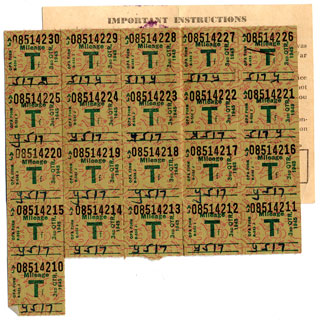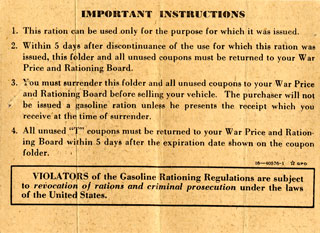Gas rationing was a by-product of the effort to conserve tires during the war. As the Japanese took over more and more of the islands in the Pacific, they cut off the United States' primary source for the rubber needed for tires. Restrictions on gas purchases began in late 1942 and continued until August 1945.
Most drivers were assigned to one of four classifications of rationing:
"A" stamps went to those with the lowest priority, and allowed the driver four gallons of gas per week - later reduced to three gallons.
"B" stamps were doled out to war production workers and servicemen, and meant a ration of 10 gallons per week.
"C" stamps entitled doctors, mail carriers, and other "necessary" services to a supply of gas as needed to carry on their work.
"T" stamps were given to truckers and salesmen who carried necessary supplies.
An additional category, "X", provided an unlimited amount of gas to a select few, such as Congressmen.
These gas ration cards and stamps belonged to the International Shoe Company, in care of H.O. Lindberg of St. Paul.
Creator: Office of Price Administration
Publisher: Minnesota Historical Society
Dates: 1942–1945
Identifer: accession 1998.324.13.B; 1998.324.13.D





